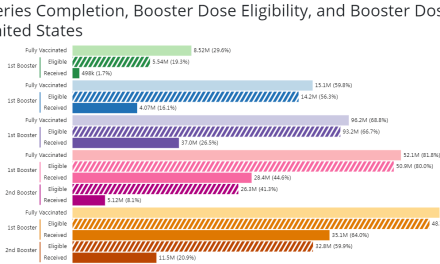Abstract
Background and Aim:
Coronavirus disease (COVID-19) public health policy has focused on the severe acute respiratory syndrome coronavirus 2 (SARS-CoV-2) virus and its effects on human health while environmental factors have been largely ignored. In considering the epidemiological triad (agent-host-environment) applicable to all disease, we investigated a possible environmental factor in the COVID-19 pandemic: ambient radiofrequency radiation from wireless communication systems including microwaves and millimeter waves. SARS-CoV-2, the virus that caused the COVID-19 pandemic, surfaced in Wuhan, China shortly after the implementation of city-wide (fifth generation [5G] of wireless communications radiation [WCR]), and rapidly spread globally, initially demonstrating a statistical correlation to international communities with recently established 5G networks. In this study, we examined the peer-reviewed scientific literature on the detrimental bioeffects of WCR and identified several mechanisms by which WCR may have contributed to the COVID-19 pandemic as a toxic environmental cofactor. By crossing boundaries between the disciplines of biophysics and pathophysiology, we present evidence that WCR may: (1) cause morphologic changes in erythrocytes including echinocyte and rouleaux formation that can contribute to hypercoagulation; (2) impair microcirculation and reduce erythrocyte and hemoglobin levels exacerbating hypoxia; (3) amplify immune system dysfunction, including immunosuppression, autoimmunity, and hyperinflammation; (4) increase cellular oxidative stress and the production of free radicals resulting in vascular injury and organ damage; (5) increase intracellular Ca2+ essential for viral entry, replication, and release, in addition to promoting pro-inflammatory pathways; and (6) worsen heart arrhythmias and cardiac disorders.
Relevance for Patients:
In short, WCR has become a ubiquitous environmental stressor that we propose may have contributed to adverse health outcomes of patients infected with SARS-CoV-2 and increased the severity of the COVID-19 pandemic. Therefore, we recommend that all people, particularly those suffering from SARS-CoV-2 infection, reduce their exposure to WCR as much as reasonably achievable until further research better clarifies the systemic health effects associated with chronic WCR exposure.
1. Introduction
1.1. Background
Coronavirus disease 2019 (COVID-19) has been the focus of international public health policy since 2020. Despite unprecedented public health protocols to quell the pandemic, the number of COVID-19 cases continues to rise. We propose a reassessment of our public health strategies.
According to the Center for Disease Control and Prevention (CDC), the simplest model of disease causation is the epidemiological triad consisting of three interactive factors: the agent (pathogen), the environment, and the health status of the host [1]. Extensive research is being done on the agent, severe acute respiratory syndrome coronavirus 2 (SARS-CoV-2). Risk factors that make a host more likely to succumb to the disease have been elucidated. However, environmental factors have not been sufficiently explored. In this paper, we investigated the role of wireless communication radiation (WCR), a widespread environmental stressor.
We explore the scientific evidence suggesting a possible relationship between COVID-19 and radiofrequency radiation related to wireless communications technology including fifth generation (5G) of wireless communications technology, henceforth referred to as WCR. WCR has already been recognized as a form of environmental pollution and physiological stressor [2]. Assessing the potentially detrimental health effects of WCR may be crucial to develop an effective, rational public health policy that may help expedite eradication of the COVID-19 pandemic. In addition, because we are on the verge of worldwide 5G deployment, it is critical to consider the possible damaging health effects of WCR before the public is potentially harmed.
5G is a protocol that will use high frequency bands and extensive bandwidths of the electromagnetic spectrum in the vast radiofrequency range from 600 MHz to nearly 100 GHz, which includes millimeter waves (>20 GHz), in addition to the currently used third generation (3G) and fourth generation (4G) long-term evolution (LTE) microwave bands. 5G frequency spectrum allocations differ from country to country. Focused pulsed beams of radiation will emit from new base stations and phased array antennas placed close to buildings whenever persons access the 5G network. Because these high frequencies are strongly absorbed by the atmosphere and especially during rain, a transmitter’s range is limited to 300 meters. Therefore, 5G requires base stations and antennas to be much more closely spaced than previous generations. Plus, satellites in space will emit 5G bands globally to create a wireless worldwide web. The new system therefore requires significant densification of 4G infrastructure as well as new 5G antennas that may dramatically increase the population’s WCR exposure both inside structures and outdoors. Approximately 100,000 emitting satellites are planned to be launched into orbit. This infrastructure will significantly alter the world’s electromagnetic environment to unprecedented levels and may cause unknown consequences to the entire biosphere, including humans. The new infrastructure will service the new 5G devices, including 5G mobile phones, routers, computers, tablets, self-driving vehicles, machine-to-machine communications, and the Internet of Things.
The global industry standard for 5G is set by the 3G Partnership Project (3GPP), which is an umbrella term for several organizations developing standard protocols for mobile telecommunications. The 5G standard specifies all key aspects of the technology, including frequency spectrum allocation, beam-forming, beam steering, multiplexing multiple in, multiple out schemes, as well as modulation schemes, among others. 5G will utilize from 64 to 256 antennas at short distances to serve virtually simultaneously a large number of devices within a cell. The latest finalized 5G standard, Release 16, is codified in the 3GPP published Technical Report TR 21.916 and may be downloaded from the 3GPP server at https://www.3gpp.org/specifications. Engineers claim that 5G will offer performance up to 10 times that of current 4G networks [3].
COVID-19 began in Wuhan, China in December 2019, shortly after city-wide 5G had “gone live,” that is, become an operational system, on October 31, 2019. COVID-19 outbreaks soon followed in other areas where 5G had also been at least partially implemented, including South Korea, Northern Italy, New York City, Seattle, and Southern California. In May 2020, Mordachev [4] reported a statistically significant correlation between the intensity of radiofrequency radiation and the mortality from SARS-CoV-2 in 31 countries throughout the world. During the first pandemic wave in the United States, COVID-19 attributed cases and deaths were statistically higher in states and major cities with 5G infrastructure as compared with states and cities that did not yet have this technology [5].
There is a large body of peer reviewed literature, since before World War II, on the biological effects of WCR that impact many aspects of our health. In examining this literature, we found intersections between the pathophysiology of SARS-CoV-2 and detrimental bioeffects of WCR exposure. Here, we present the evidence suggesting that WCR has been a possible contributing factor exacerbating COVID-19.
1.2. Overview on COVID-19
The clinical presentation of COVID-19 has proven to be highly variable, with a wide range of symptoms and variability from case to case. According to the CDC, early disease symptoms may include sore throat, headache, fever, cough, chills, among others. More severe symptoms including shortness of breath, high fever, and severe fatigue may occur in a later stage. The neurological sequela of taste and smell loss has also been described.
Ing et al. [6] determined 80% of those affected have mild symptoms or none, but older populations and those with comorbidities, such as hypertension, diabetes, and obesity, have a greater risk for severe disease [7]. Acute respiratory distress syndrome (ARDS) can rapidly occur [8] and cause severe shortness of breath as endothelial cells lining blood vessels and epithelial cells lining airways lose their integrity, and protein rich fluid leaks into adjacent air sacs. COVID-19 can cause insufficient oxygen levels (hypoxia) that have been seen in up to 80% of intensive care unit (ICU) patients [9] exhibiting respiratory distress. Decreased oxygenation and elevated carbon dioxide levels in patients’ blood have been observed, although the etiology for these findings remains unclear.
Massive oxidative damage to the lungs has been observed in areas of airspace opacification documented on chest radiographs and computed tomography (CT) scans in patients with SARS-CoV-2 pneumonia [10]. This cellular stress may indicate a biochemical rather than a viral etiology [11].
Because disseminated virus can attach itself to cells containing an angiotensin-converting enzyme 2 (ACE2) receptor; it can spread and damage organs and soft tissues throughout the body, including the lungs, heart, intestines, kidneys, blood vessels, fat, testes, and ovaries, among others. The disease can increase systemic inflammation and induce a hypercoagulable state. Without anticoagulation, intravascular blood clots can be devastating [12].
In COVID-19 patients referred to as “long-haulers,” symptoms can wax and wane for months [13]. Shortness of breath, fatigue, joint pain, and chest pain can become persistent symptoms. Post-infectious brain fog, cardiac arrhythmia, and new onset hypertension have also been described. Long-term chronic complications of COVID-19 are being defined as epidemiological data are collected over time.
As our understanding of COVID-19 continues to evolve, environmental factors, particularly those of wireless communication electromagnetic fields, remain unexplored variables that may be contributing to the disease including its severity in some patients. Next, we summarize the bioeffects of WCR exposure from the peer reviewed scientific literature published over decades.
1.3. Overview on bioeffects of WCR exposure
Organisms are electrochemical beings. Low-level WCR from devices, including mobile telephony base antennas, wireless network protocols utilized for the local networking of devices and internet access, trademarked as Wi-Fi (officially IEEE 802.11b Direct Sequence protocol; IEEE, Institute of Electrical and Electronic Engineers) by the Wi-Fi alliance, and mobile phones, among others, may disrupt regulation of numerous physiological functions. Non-thermal bioeffects (below the power density that causes tissue heating) from very low-level WCR exposure have been reported in numerous peer-reviewed scientific publications at power densities below the International Commission on Non-Ionizing Radiation Protection (ICNIRP) exposure guidelines [14]. Low-level WCR has been found to impact the organism at all levels of organization, from the molecular to the cellular, physiological, behavioral, and psychological levels. Moreover, it has been shown to cause systemic detrimental health effects including increased cancer risk [15], endocrine changes [16], increased free radical production [17], deoxyribonucleic acid (DNA) damage [18], changes to the reproductive system [19], learning and memory defects [20], and neurological disorders [21]. Having evolved within Earth’s extremely low-level natural radiofrequency background, organisms lack the ability to adapt to heightened levels of unnatural radiation of wireless communications technology with digital modulation that includes short intense pulses (bursts).
The peer-reviewed world scientific literature has documented evidence for detrimental bioeffects from WCR exposure including 5G frequencies over several decades. The Soviet and Eastern European literature from 1960 to 1970s demonstrates significant biological effects, even at exposure levels more than 1000 times below 1 mW/cm2, the current guideline for maximum public exposure in the US. Eastern studies on animal and human subjects were performed at low exposure levels (<1 mW/cm2) for long durations (typically months). Adverse bioeffects from WCR exposure levels below 0.001 mW/cm2 have also been documented in the Western literature. Damage to human sperm viability including DNA fragmentation by internet-connected laptop computers at power densities from 0.0005 to 0.001 mW/cm2 has been reported [22]. Chronic human exposure to 0.000006 – 0.00001 mW/cm2 produced significant changes in human stress hormones following a mobile phone base station installation [23]. Human exposures to cell phone radiation at 0.00001 – 0.00005 mW/cm2 resulted in complaints of headache, neurological problems, sleep problems, and concentration problems, corresponding to “microwave sickness” [24,25]. The effects of WCR on prenatal development in mice placed near an “antenna park” exposed to power densities from 0.000168 to 0.001053 mW/cm2 showed a progressive decrease in the number of newborns and ended in irreversible infertility [26]. Most US research has been performed over short durations of weeks or less. In recent years, there have been few long-term studies on animals or humans.
Illness from WCR exposure has been documented since the early use of radar. Prolonged exposure to microwaves and millimeter waves from radar was associated with various disorders termed “radio-wave sickness” decades ago by Russian scientists. A wide variety of bioeffects from nonthermal power densities of WCR were reported by Soviet research groups since the 1960s. A bibliography of over 3700 references on the reported biological effects in the world scientific literature was published in 1972 (revised 1976) by the US Naval Medical Research Institute [27,28]. Several relevant Russian studies are summarized as follows. Research on Escherichia coli bacteria cultures show power density windows for microwave resonance effects for 51.755 GHz stimulation of bacterial growth, observed at extremely low power densities of 10−13 mW/cm2 [29], illustrating an extremely low level bioeffect. More recently Russian studies confirmed earlier results of Soviet research groups on the effects of 2.45 GHz at 0.5 mW/cm2 on rats (30 days exposure for 7 h/day), demonstrating the formation of antibodies to the brain (autoimmune response) and stress reactions [30]. In a long-term (1 – 4 year) study comparing children who use mobile phones to a control group, functional changes, including greater fatigue, decreased voluntary attention, and weakening of semantic memory, among other adverse psychophysiological changes, were reported [31]. Key Russian research reports that underlie the scientific basis for Soviet and Russian WCR exposure guidelines to protect the public, which are much lower than the US guidelines, have been summarized [32].
By comparison to the exposure levels employed in these studies, we measured the ambient level of WCR from 100 MHz to 8 GHz in downtown San Francisco, California in December, 2020, and found an average power density of 0.0002 mW/cm2. This level is from the superposition of multiple WCR devices. It is approximately 2 × 1010 times above the natural background.
Pulsed radio-frequency radiation such as WCR exhibits substantially different bioeffects, both qualitatively and quantitatively (generally more pronounced) compared to continuous waves at similar time-averaged power densities [33–36]. The specific interaction mechanisms are not well understood. All types of wireless communications employ extremely low frequency (ELFs) in the modulation of the radiofrequency carrier signals, typically pulses to increase the capacity of information transmitted. This combination of radiofrequency radiation with ELF modulation(s) is generally more bioactive, as it is surmised that organisms cannot readily adapt to such rapidly changing wave forms [37–40]. Therefore, the presence of ELF components of radiofrequency waves from pulsing or other modulations must be considered in studies on the bioeffects of WCR. Unfortunately, the reporting of such modulations has been unreliable, especially in older studies [41].
The BioInitiative Report [42], authored by 29 experts from ten countries, and updated in 2020, provides a scholarly contemporary summary of the literature on the bioeffects and health consequences from WCR exposure, including a compendium of supporting research. Recent reviews have been published [43–46]. Two comprehensive reviews on the bioeffects of millimeter waves report that even short-term exposures produce marked bioeffects [47,48].
2. Methods
An ongoing literature study of the unfolding pathophysiology of SARS-CoV-2 was performed. To investigate a possible connection to bioeffects from WCR exposure, we examined over 250 peer-reviewed research reports from 1969 to 2021, including reviews and studies on cells, animals, and humans. We included the world literature in English and Russian reports translated to English, on radio frequencies from 600 MHz to 90 GHz, the carrier wave spectrum of WCR (2G to 5G inclusive), with particular emphasis on nonthermal, low power densities (<1 mW/cm2), and long-term exposures. The following search terms were used in queries in MEDLINE® and the Defense Technical Information Center (https://discover.dtic.mil) to find relevant study reports: radiofrequency radiation, microwave, millimeter wave, radar, MHz, GHz, blood, red blood cell, erythrocyte, hemoglobin, hemodynamic, oxygen, hypoxia, vascular, inflammation, pro-inflammatory, immune, lymphocyte, T cell, cytokine, intracellular calcium, sympathetic function, arrhythmia, heart, cardiovascular, oxidative stress, glutathione, reactive oxygen species (ROS), COVID-19, virus, and SARS-CoV-2. Occupational studies on WCR exposed workers were included in the study. Our approach is akin to Literature-Related Discovery, in which two concepts that have heretofore not been linked are explored in the literature searches to look for linkage(s) to produce novel, interesting, plausible, and intelligible knowledge, that is, potential discovery [49]. From analysis of these studies in comparison with new information unfolding on the pathophysiology of SARS-CoV-2, we identified several ways in which adverse bioeffects of WCR exposure intersect with COVID-19 manifestations and organized our findings into five categories.
3. Results
Table 1 lists the manifestations common to COVID-19 including disease progression and the corresponding adverse bioeffects from WCR exposure. Although these effects are delineated into categories — blood changes, oxidative stress, immune system disruption and activation, increased intracellular calcium (Ca2+), and cardiac effects — it must be emphasized that these effects are not independent of each other. For example, blood clotting and inflammation have overlapping mechanisms, and oxidative stress is implicated in erythrocyte morphological changes as well as in hypercoagulation, inflammation, and organ damage.
Table 1
| Wireless communications radiation (WCR) exposure bioeffects | COVID-19 manifestations |
|---|---|
| Blood changes Short-term: rouleaux, echinocytes Long-term: reduced blood clotting time, reduced hemoglobin, hemodynamic disorders |
Blood changes Rouleaux, echinocytes Hemoglobin effects; vascular effects →Reduced hemoglobin in severe disease; autoimmune hemolytic anemia; hypoxemia and hypoxia →Endothelial injury; impaired microcirculation; hypercoagulation; disseminated intravascular coagulopathy (DIC); pulmonary embolism; stroke |
| Oxidative stress Glutathione level decrease; free radicals and lipid peroxide increase; superoxide dismutase activity decrease; oxidative injury in tissues and organs |
Oxidative stress Glutathione level decrease; free radical increase and damage; apoptosis→Oxidative injury; organ damage in severe disease |
| Immune system disruption and activation Immune suppression in some studies; immune hyperactivation in other studies Long-term: suppression of T-lymphocytes; inflammatory biomarkers increased; autoimmunity; organ injury |
Immune system disruption and activation Decreased production of T-lymphocytes; elevated inflammatory biomarkers. →Immune hyperactivation and inflammation; cytokine storm in severe disease; cytokine-induced hypo-perfusion with resulting hypoxia; organ injury; organ failure |
| Increased intracellular calcium From activation of voltage-gated calcium channels on cell membranes, with numerous secondary effects |
Increased intracellular calcium →Increased virus entry, replication, and release →Increased NF-κB, pro-inflammatory processes, coagulation, and thrombosis |
| Cardiac effects Up-regulation of sympathetic nervous system; palpitations and arrhythmias |
Cardiac effects Arrhythmias →Myocarditis; myocardial ischemia; cardiac injury; cardiac failure |









